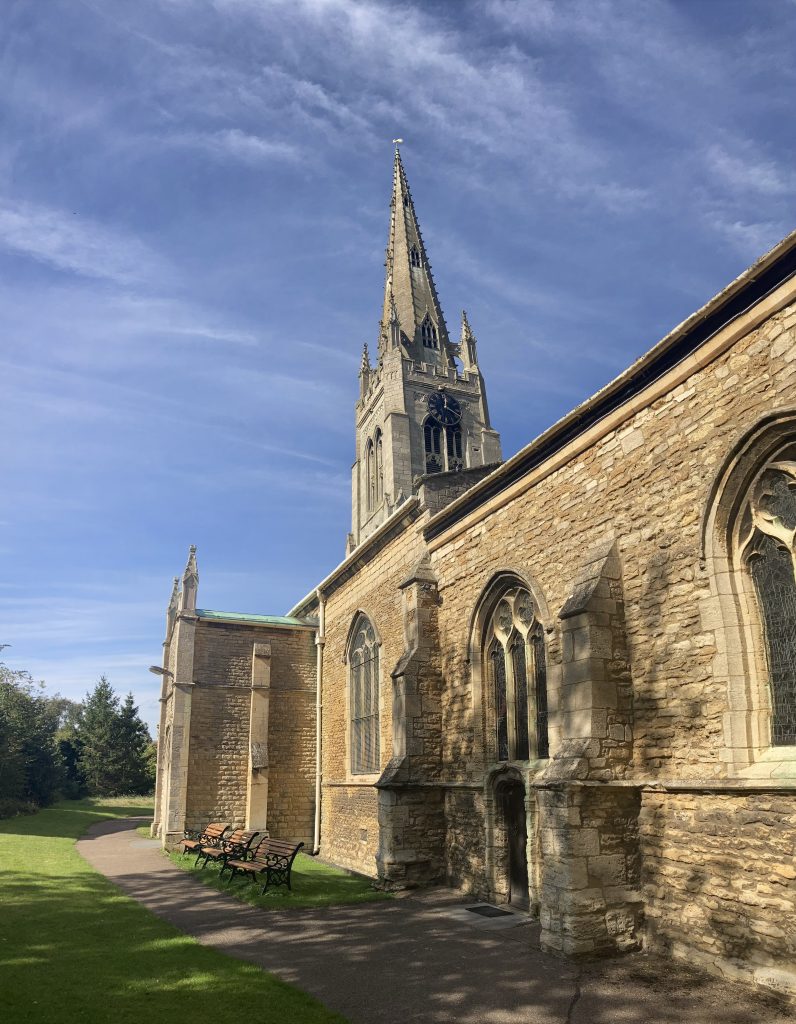
After my jaunt through the winding back roads, ‘twixt such places as Turves, Burnt House and the glorious Cock Bank, I finally wound up in Whittlesey.
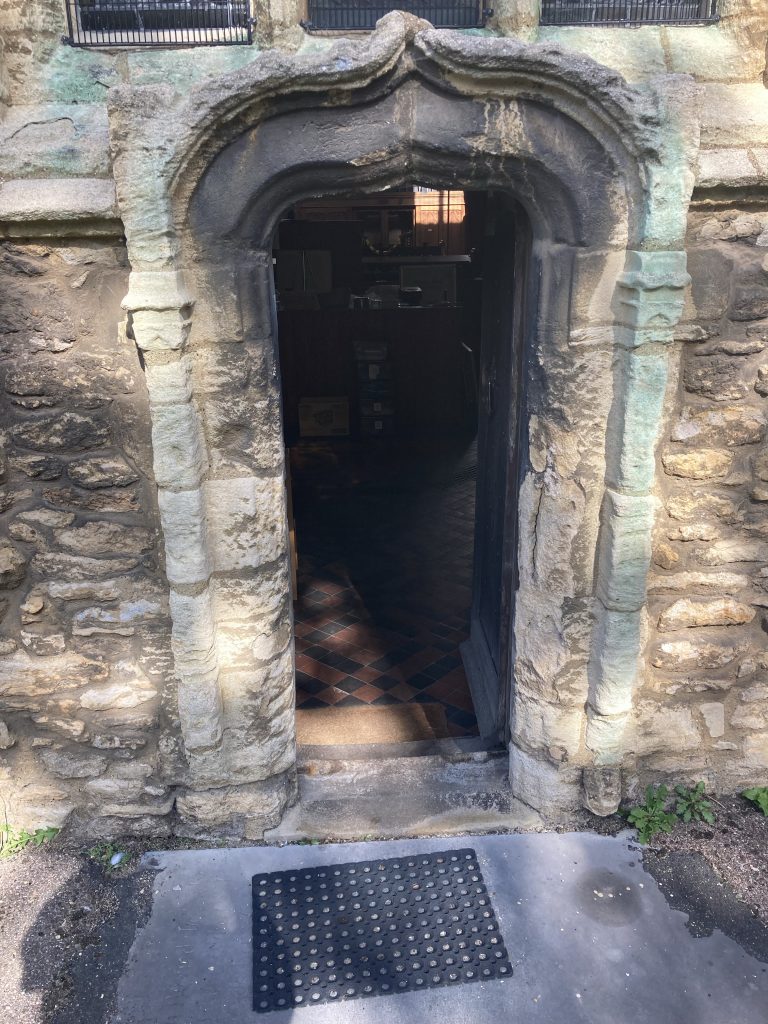
And here I decided to explore one of the churches. St. Mary’s isn’t set in the nicest environs. Whilst she benefits from a park or playing field on her west aspect, the other sides are hemmed in by more modern development, such as the car park, where I stopped.
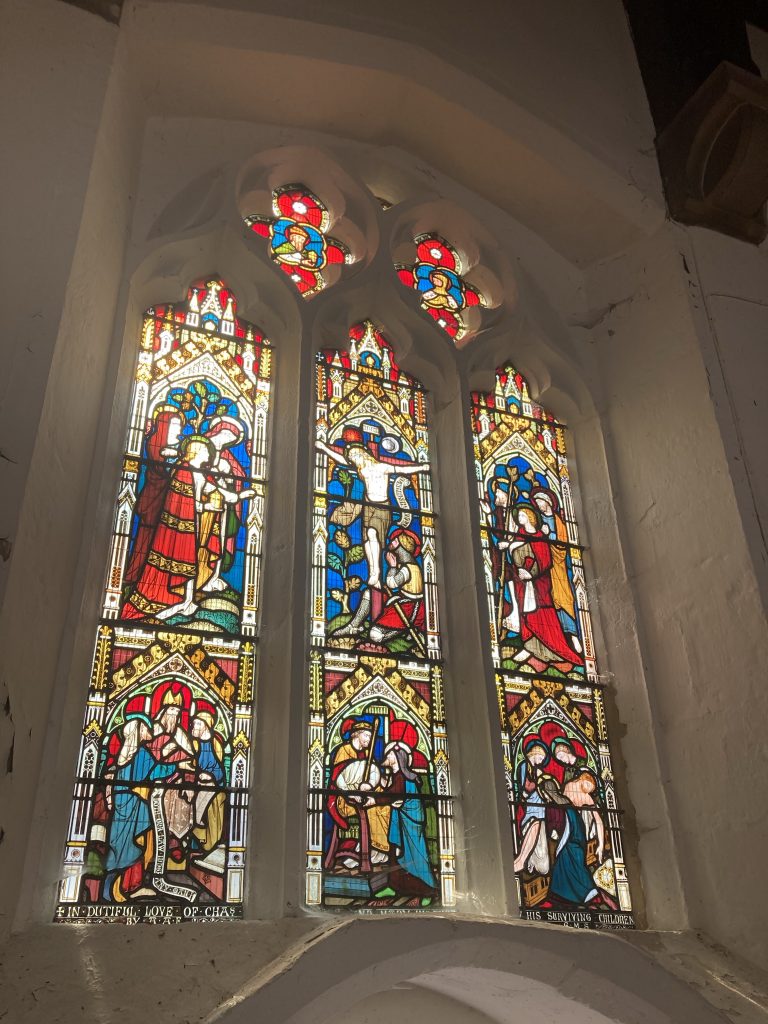
One of the things I always look for first, inside churches like this, is the stained glass.
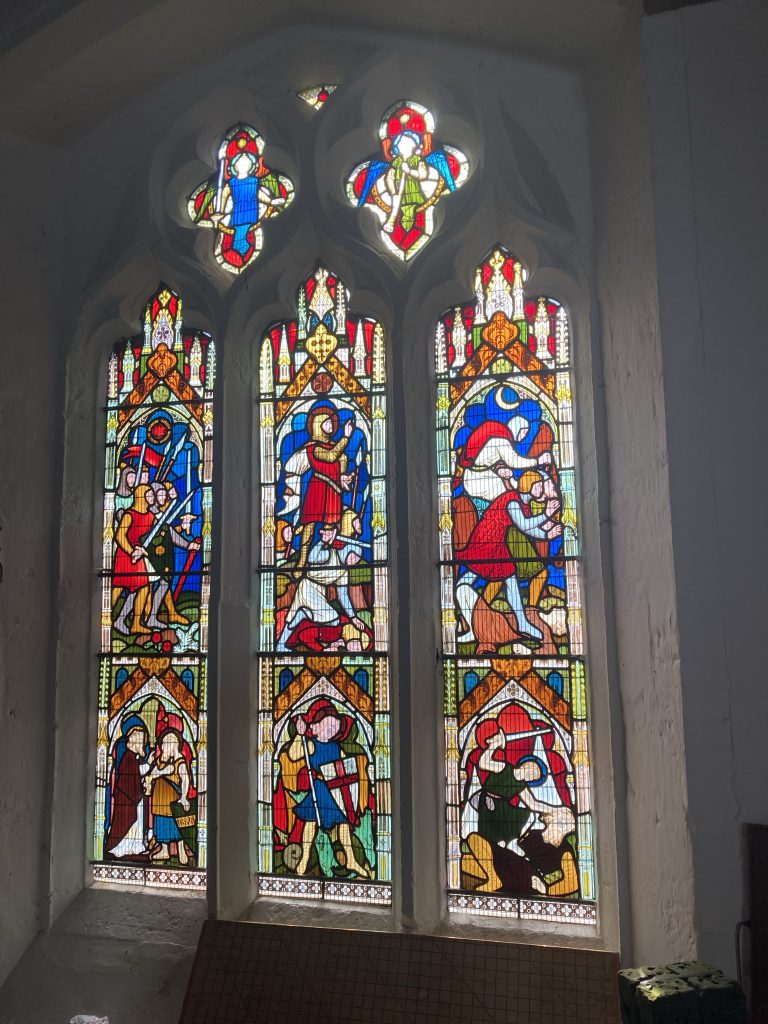
Truth be told, the Reformation and post-Cromwellian vandalism – what Eamon Duffy called the The Stripping Of The Altars* – mean that almost all of any original glass is long gone. Instead you get acres of boring plain glass, and the stuff folk have put back in the centuries since. A very great proportion of it in the Victorian era.
* A book I want read, but haven’t got round to yet.
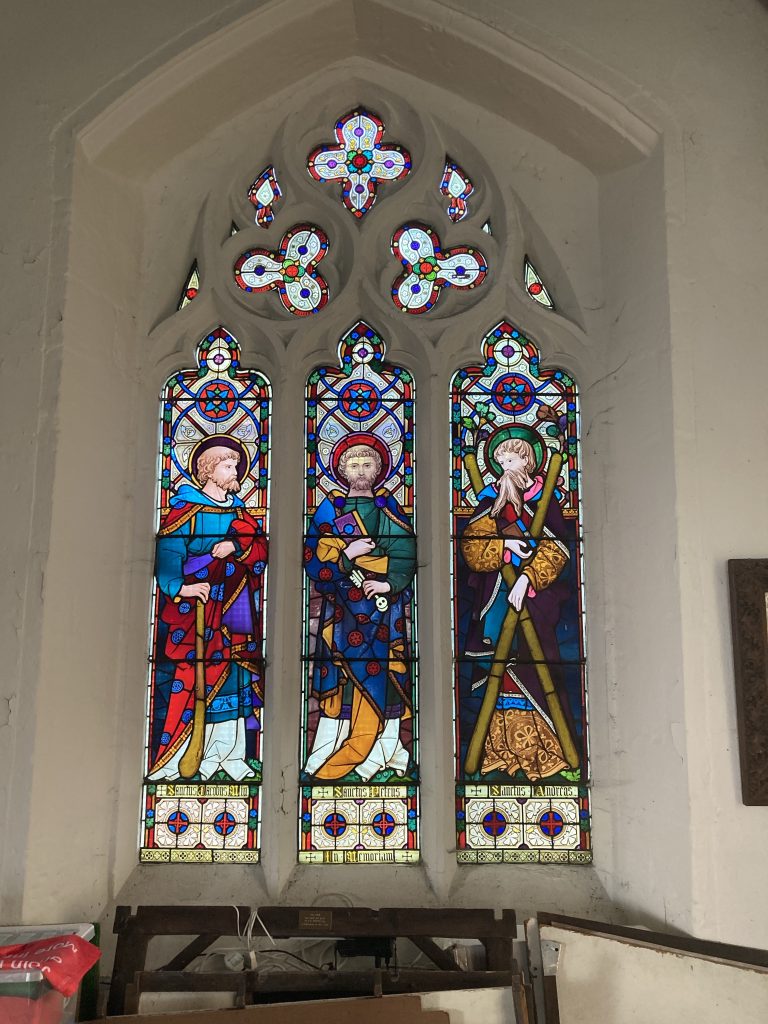
Consequently a lot of the stuff in parochial places, such as this, can tend to be of the rather journeyman variety. Better taken in broadly, at a glance and for overall effect, paling somewhat on closer inspection.
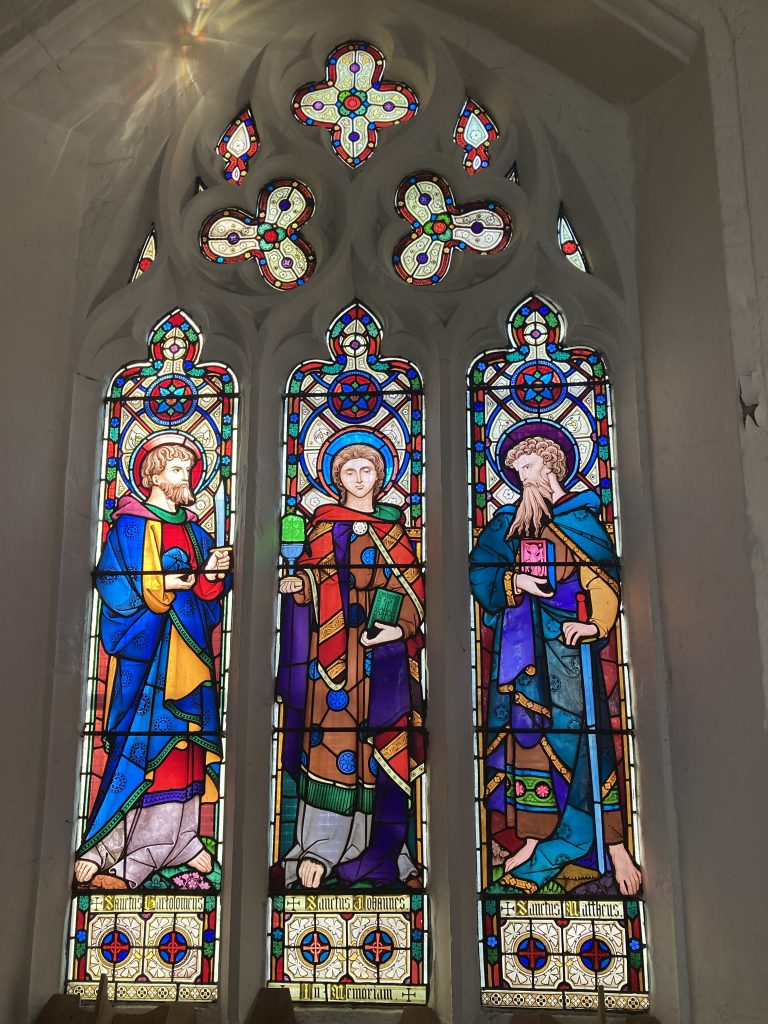
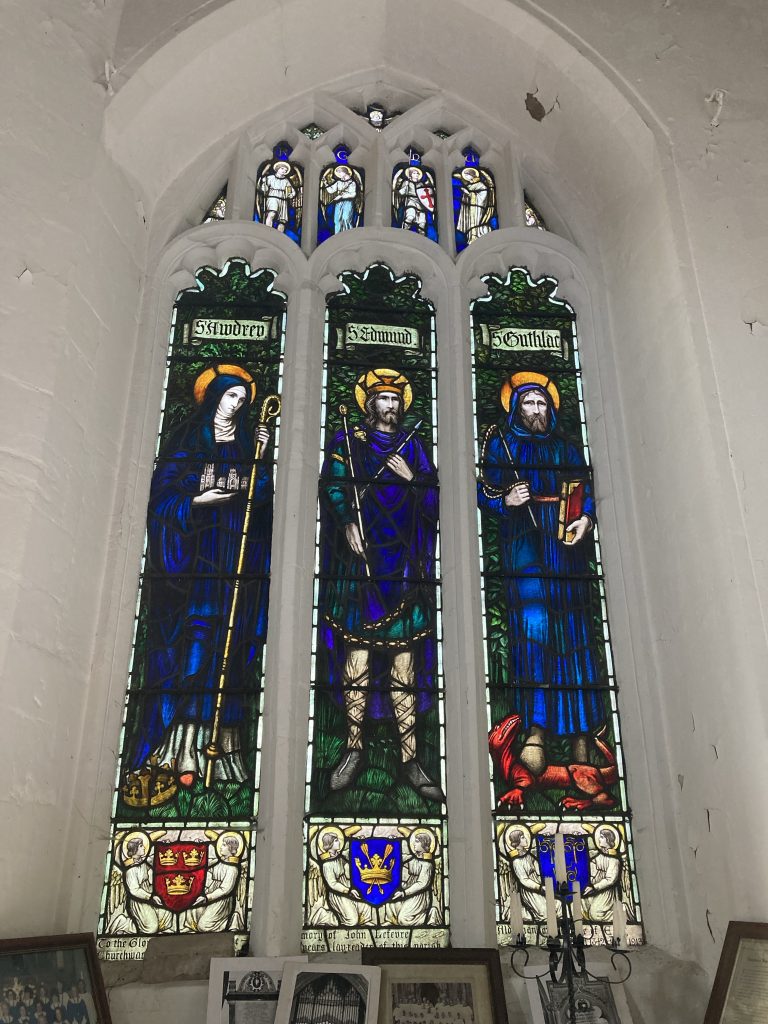
Ken (more on him below) told me the above window is darker, and richer, because it never gets direct sunlight, and therefore the colours haven’t faded. So it’s supposedly nearer to its original state than the other (more faded) windows.
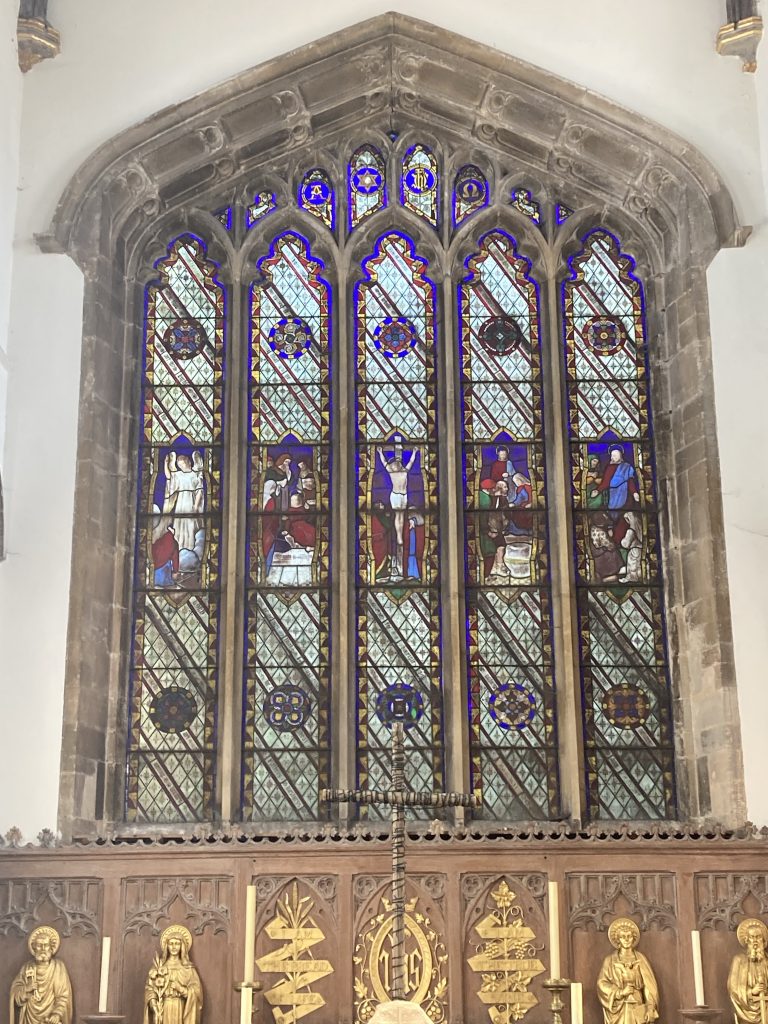
This one, behind the altar, is darker or duller for a different reason. It needs cleaning! Also, light through this lot is blocked by a row of large trees, just outside the window.
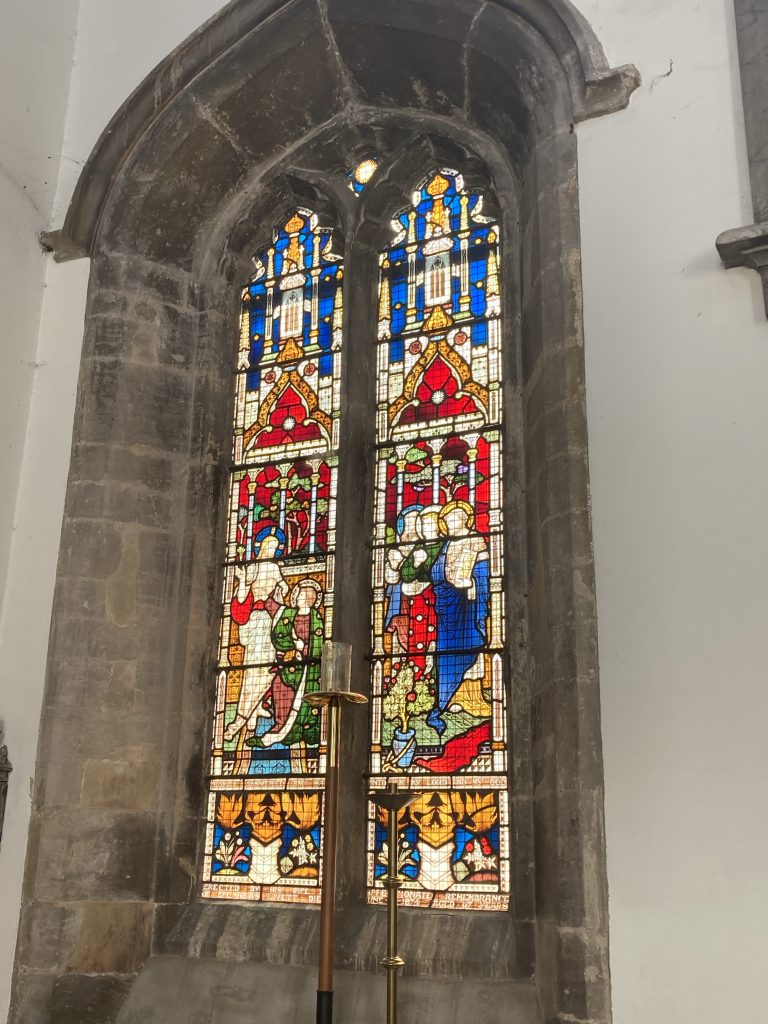
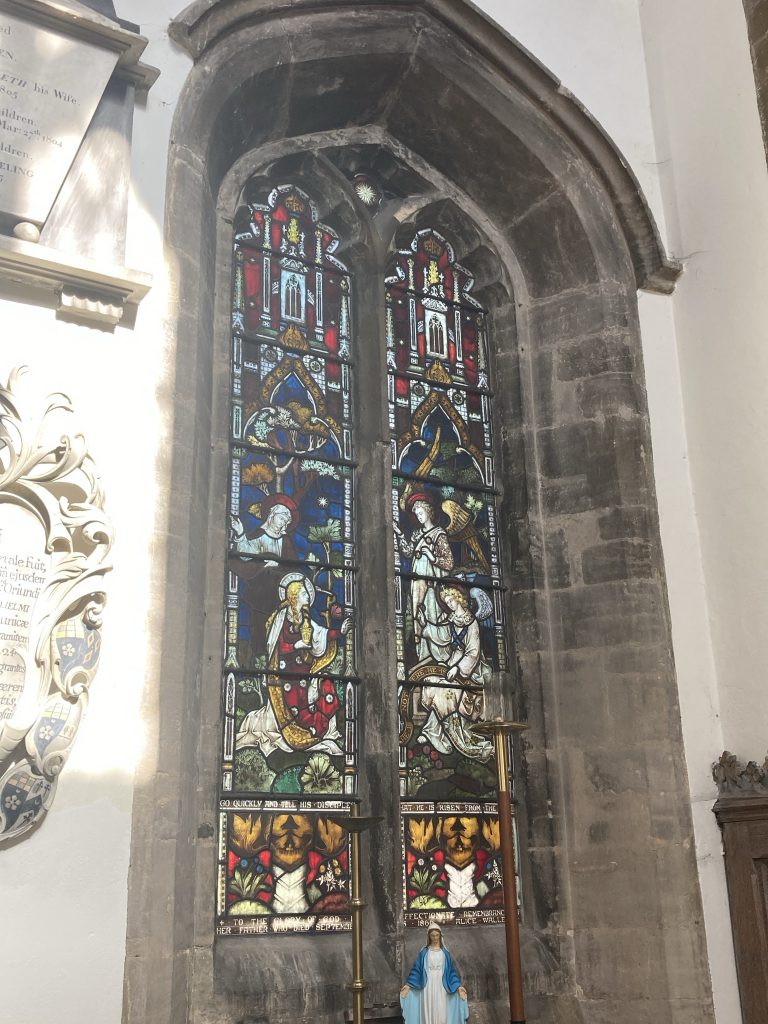
A church Warden, named Ken approached me, as I was wandering around taking photos outside. I suspect he might have though I was ‘casing the joint’. He ended up giving me a guided tour!
There’s some interesting local historical connections: from Cromwellian vandals, to a Napoleonic general, and Thomas ‘traction engines’ Aveling (Fred Dibnah fans like me will have heard of Aveling and Porter machines!). Lots of interesting architecture, decoration, furnishings, etc. Fab!
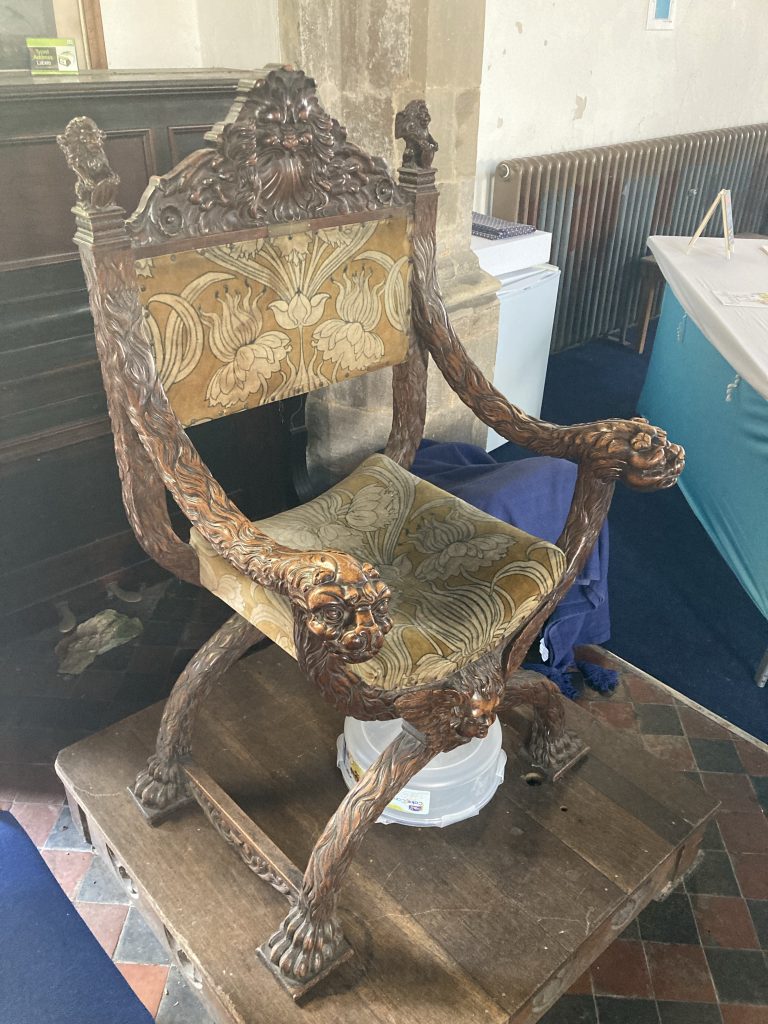
I love this seat! The Bishop’s chair, apparently. Wasn’t too keen on the egregious Tupperware though!
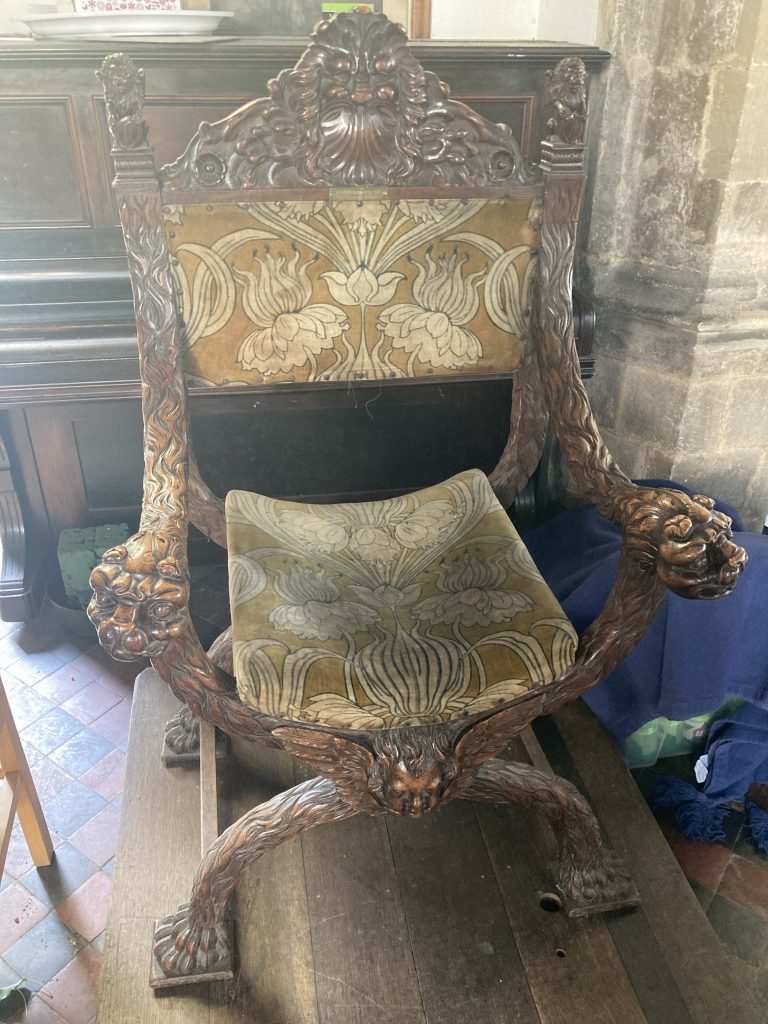
I took another pic, without the spurious Tupperware. The style is Roman, in terms of the two opposed or symmetrical ’C’ shapes, turned on their sides, that make up the basic curvy ‘X’ of the architecture or structure.
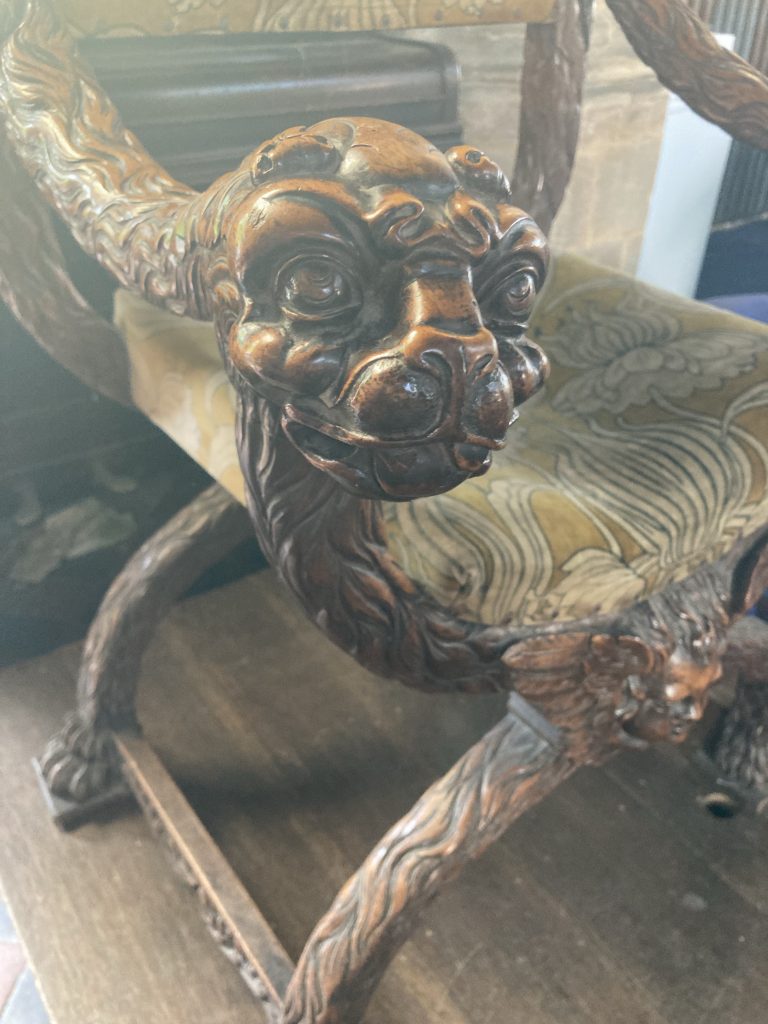
I don’t know if the embellishment is Romanesque, as well? Or more Gothic, and Northern European? Whatever it may be, I love it! Napoleon had a similar shaped seat. But his was much more ‘Imperial bling’. I prefer this one. It feels like it’s crept out of dark northern woods, as, indeed, in a sense – it’s manufacture – it has.
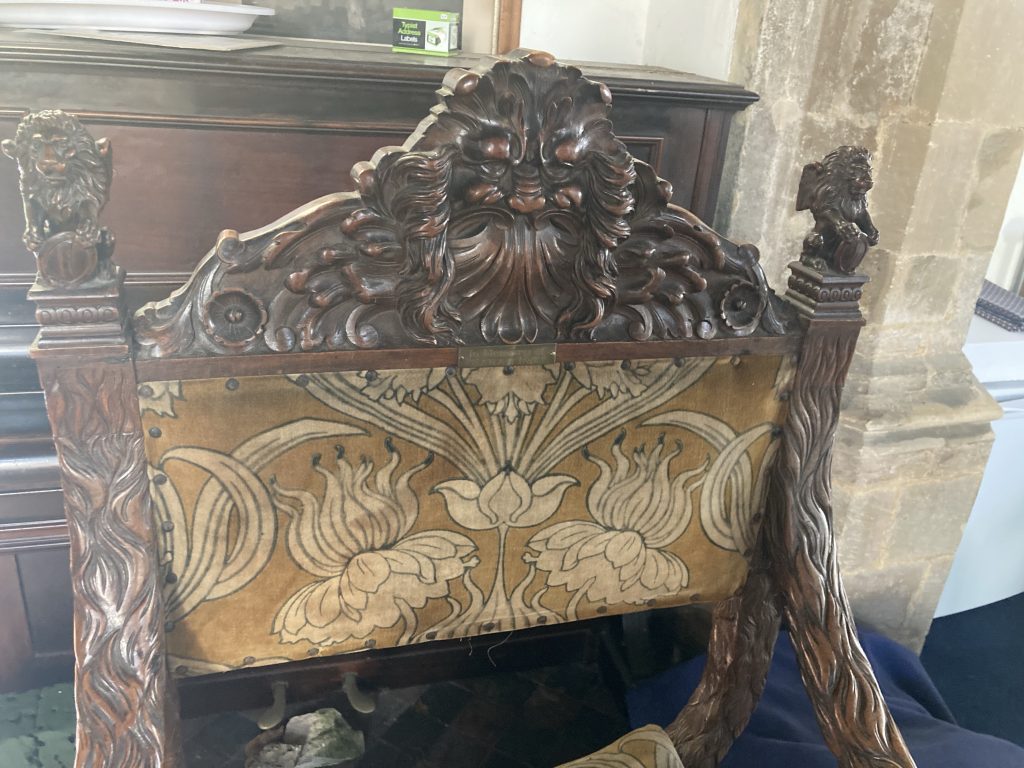
I have plans to build a similar chair for myself. One of these good ol’ days…
